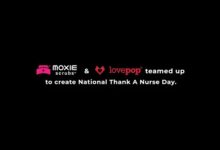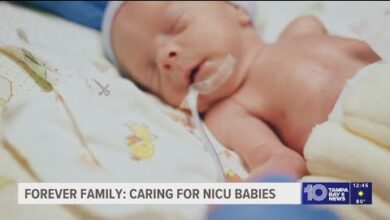Analysis: The evolving role of healthcare support workers

Healthcare support workers (HCSWs) have played a key role in the NHS workforce since their inception.
Part of the unregulated and unregistered workforce, they support good patient care by helping registered nurses, midwives and other healthcare professionals in a variety of settings.
The HCSW role has continued to expand and develop in recent years, and now there are more than 30 different job titles that align with it.
“There are so many aspects to our role now that were never there, even 10 years ago”
Sharon Mitchel
According to NHS England, HCSW is an umbrella term that covers a variety of health and care support roles, the majority of which are on a band 2 or band 3 Agenda for Change contract. Common titles include healthcare assistants (HCAs), nursing assistants, and nursing and maternity support workers.
Currently, there are a record number of HCSWs working across NHS trusts in England, which comes as a result of large-scale recruitment drives by NHS England.
The organisation told Nursing Times that the most recent data, from this July, showed there were now 160,200 full-time equivalent (FTE) staff working as HCSWs in roles supporting nurses and midwives.
Since January 2022, some 62,186 FTE new starters have joined the NHS in these roles – of these, 46% were new to healthcare.
The responsibility of HCSWs revolves around the fundamental principles of care, recording fluid balance and nutrition, and helping patients with things like eating, bathing and toileting.
However, in recent years, the skillset of the role has extended, with some HCSWs now undertaking clinical tasks like cannulation, observations of vital signs, venipuncture and scans.
Sharon Mitchel, an HCA practice educator at Milton Keynes University Hospital NHS Foundation Trust, told Nursing Times that HCSWs now had “a very extensive role” in nursing teams.
“There are so many aspects to our role now that were never there, even 10 years ago,” she said.
Since stepping into the educator role five years ago, Ms Mitchel has introduced a dedicated induction package for HCSWs that includes a week of guided training on a simulated ward area and specific training on checking vital signs.
The scheme sits alongside the mandatory Care Certificate, which all HCSWs have to complete. Ms Mitchel, who is on the Royal College of Nursing (RCN) UK Nursing Support Workers Committee, explained that the training package had made HCSWs feel “a lot more valued”.
She added: “I think it’s just giving something back to them that I felt was missing for me when I was an HCA.”
While welcoming the upskilling of HCSWs, Ms Mitchel said, in some cases, the role of HCSWs had evolved “a little bit too much” and they were being asked to undertake tasks beyond their banding and pay grade.

Sharon Mitchel
“If I’m really honest, I think some of the task-oriented things that we’re asked to do are a little bit outside of our remit,” she said.
In addition, she claimed that some employers were advertising HCSW jobs at band 2, but with job descriptions that were more aligned to band 3 roles.
Concerns such as these have been at the epicentre of recent strike action by HCSWs belonging to Unison, as part of the union’s Pay Fair for Patient Care campaign.
Deputy head of health at Unison, Helga Pile, told Nursing Times the campaign aimed to “bring it home to employers” that it was neither right, nor fair, for HCSWs to be expected to take on additional responsibilities but not be paid for it.
“What seems to have happened is that these staff have just been undervalued and kind of taken for granted,” she said.
There are now 86 HCSW rebanding campaigns taking place across the UK. So far, 22 of these have been successful and led to around 10,000 HCSWs being moved from band 2 to band 3.
Unison has said that at least £36.5m has been won for HCSWs through this campaign.
Ms Pile said: “Apart from the much needed and incredibly important money, to ease the cost-of-living impacts they’re suffering as lower paid workers, [the campaign has] also been an opportunity for [HCSWs] to draw attention to the vital role they play in nursing teams, and to bring that to the attention of senior people within the employers they work for.”
One of the employers embroiled in the dispute was Mid Cheshire Hospitals NHS Foundation Trust which, after strike action by HCSWs, put forward an offer this month of upbanding and full back pay as per Unison’s demands.
Sue Foy, an HCA working at Mid Cheshire, told Nursing Times that HCSWs had been “pushed” into strike action.
She said: “I think the trust relied on us, as carers, to go above and beyond. I think it got to a point where we were being asked to do more and more, and we were not getting recognised for what we were doing.”
Meanwhile, a trust which has still not resolved the dispute is Wirral University Hospital NHS Foundation Trust. Earlier this month, the trust saw hundreds of HCSWs walk out for five days over banding and backpay.
Tracey, who did not wish to give her last name, told Nursing Times that she and her colleagues had been expected to take blood sugars, remove catheters, and complete bladder scans, electrocardiograms (ECGs), wound care, dressings and skin checks, all while being on a band 2 job profile.
Tracey, who has been an HCA for over 10 years, said she wanted the perception of HCSWs to change, to show the value they bring to a multidisciplinary team.
“Staff who aren’t healthcare [support workers] seem to think we’re there for clearing up crap and that’s all we’re there… it’s just really disheartening,” she said.
Despite feeling somewhat demoralised, Tracey said she was confident that Wirral would eventually meet Unison’s demands.
“We will win this because we are going nowhere until we win it. We’ll carry on striking and striking and striking,” she said.
In the NHS Long Term Workforce Plan, published in June, the government committed to expanding the HCSW workforce, “to build a sufficient and sustainable pipeline of people, who the NHS trains to progress to more advanced clinical roles”.
It estimated that, to meet the anticipated demand in 15 years’ time, 47,500-56,500 more HCSWs would need to be recruited.
However, concerns have been raised that efforts to increase the number of HCSWs have been done partly to plug gaps in the registered nursing workforce, with nurse vacancies in England still above 40,000.
Research by nursing workforce experts at the University of Southampton has found that, with a shortage of registered nurses on duty, there are potential negative consequences for patients, including adverse outcomes and even risk of death.
Evidence has also suggested that addressing registered nurse shortages with increased provision of HCSWs is unlikely to alleviate any of those risks.
Professor Jane Ball, a researcher at the University of Southampton who has a background in nursing, has conducted several studies in recent years that have concluded that the substitution of less-qualified staff in place of registered nurses is neither safe nor cost-effective.
She told Nursing Times that, although there was “a real need to understand the value of the support workforce”, it must be acknowledged that they cannot replace a registered nurse, who is degree educated and regulated by the Nursing and Midwifery Council (NMC).

Jane Ball
She said: “I firmly believe there is no substitute for a registered nurse, but there is huge benefit from having good support.
“[Members of] that support workforce themselves need to be taken seriously, paid properly, trained properly [and] given the support they need and the conditions they need – and not left with a whole load of responsibilities without the means to deliver.”
Professor Ball noted that recent pressures on the NHS had made discussions around staffing and skill mix “contentious” and oftentimes polarised.
She added: “It sets up this quite binary and reductionist view that registered nurses [are] good and healthcare support workers [are] not good.
“That is unhelpful to everybody, because I think the truth is we do need both. Both are valuable and have a really important role to play.”
Professor Ball acknowledged the issues around pay and banding for HCSWs, as outlined in the Unison campaign, and said that research had also shown there was “a lot of unfairness” about the way the HCSW workforce is treated.
“Pay levels are low [and the] training offered is very little in most cases,” she said.
“So there’s an awful lot of pressure put on the people in those roles to do a lot of care that used to be done by someone who’s had three years of education.”
There are now a number of opportunities available to HCSWs who wish to progress to a career in nursing, including those wanting to train to be a nursing associate (NA).
The NA role has existed in England since 2019 and was initially designed to bridge the gap between HCSWs and registered nurses. There are now almost 10,000 NAs on the NMC register.
RCN professional lead for nursing support workers, Ofrah Muflahi, told Nursing Times that the introduction of the NA role had “changed the dynamic in the nursing workforce” but that it was “not a negative thing”.
However, she warned that the NA role must also not fall victim to being used to plug registered nurse gaps.
She said: “We really need to be clear – and we are in the RCN – that the registered nurse has a role to play, the nursing associative has a role to play, but also the support workforce has a role to play. We work as a multidisciplinary team.”

Ofrah Muflahi
Ms Muflahi, who started her career as an HCA and is now a nurse, said the public’s perception of who makes up a nursing team was also “really important” and noted that sometimes there was confusion about the different roles.
“The public need to know: this a support worker and this is what they do, and this a registered nurse and this is what they do,” she said.
In 2020, at the height of the Covid-19 pandemic, the RCN launched Nursing Support Workers’ Day, to amplify the voice of this often “unseen and unheard” workforce, said Ms Muflahi.
She added: “The ask came from our RCN members and what they wanted to do was really acknowledge, celebrate and raise awareness of the plethora of roles within the support workforce.”
Held on 23 November, Nursing Support Workers’ Day was about “saying thank you” to those on lower bands who work in nursing teams, she said, noting that each year registered nurses, doctors and charities all get involved in the celebrations.
“People underestimate sometimes the power of actually showing gratitude and saying thank you to people who are often on the lowest pay,” Ms Muflahi said.
“We know when our staff are valued, they always go above and beyond, and it really does something around how they care and how they care better for the people they look after.”







